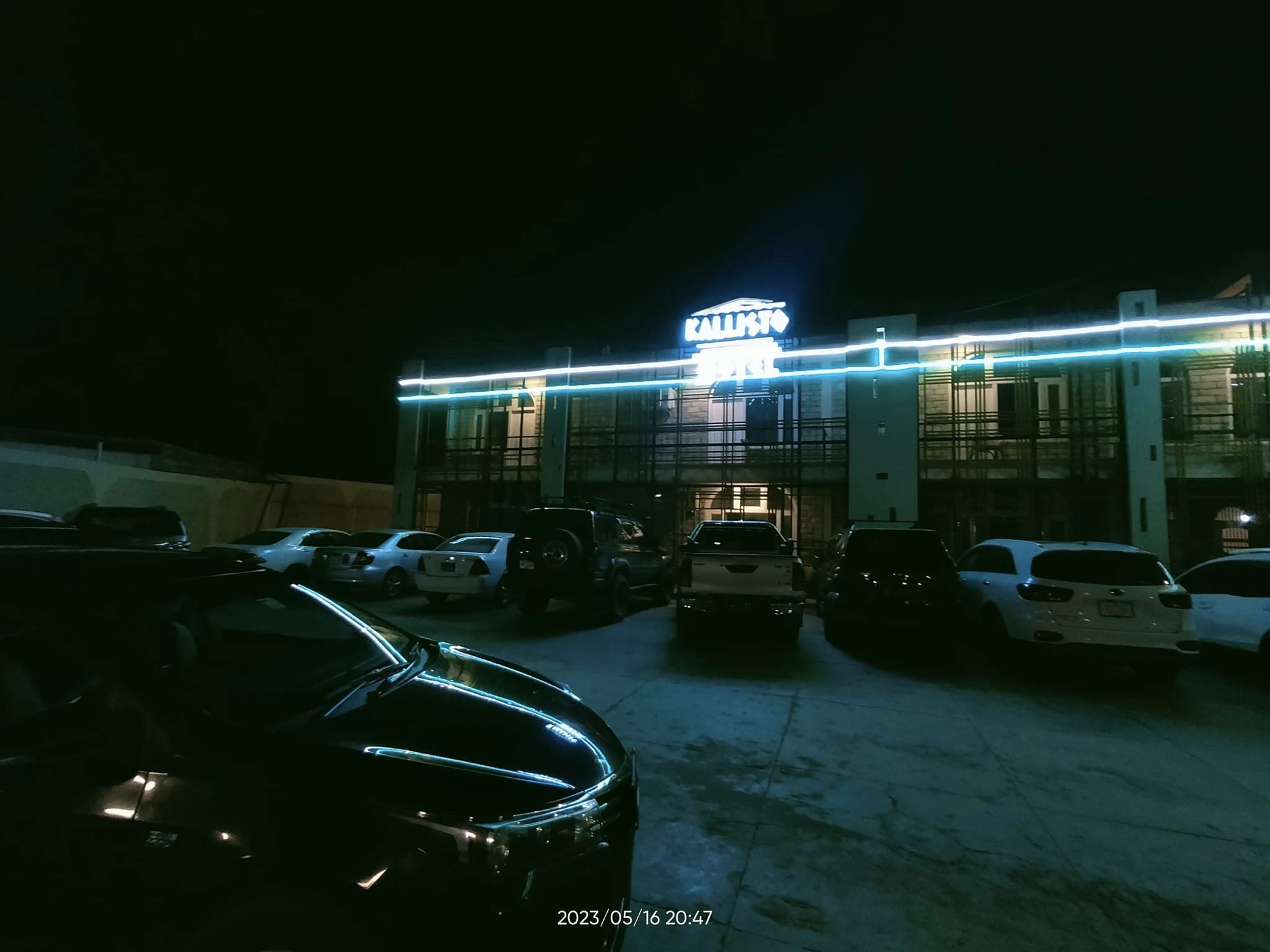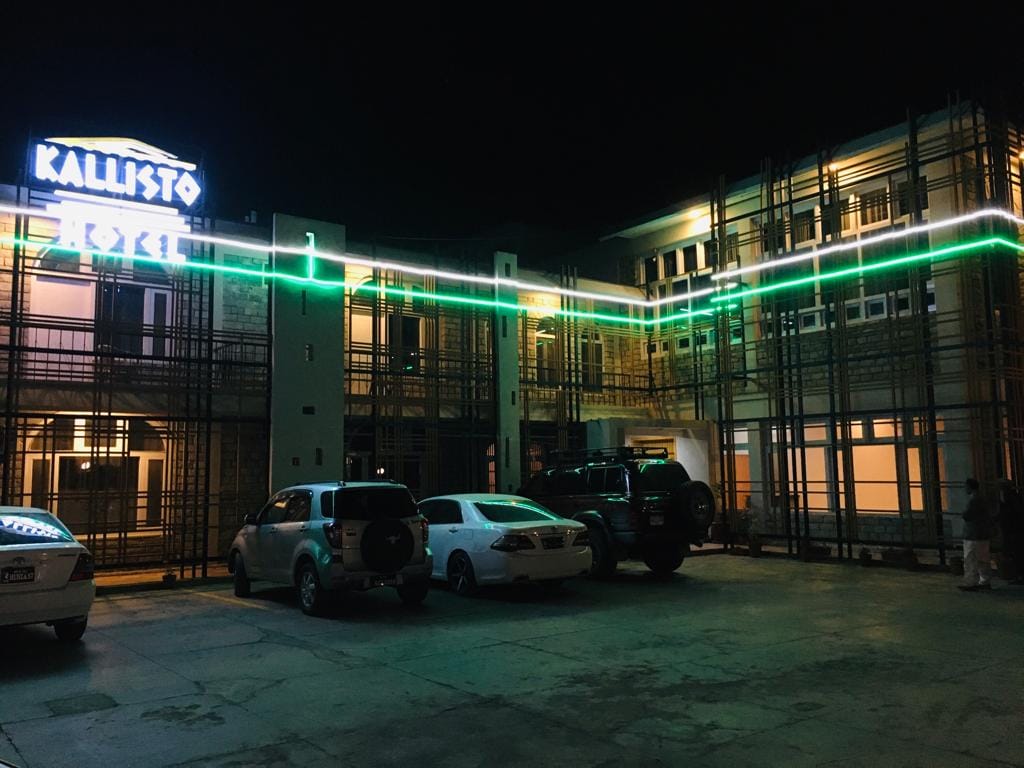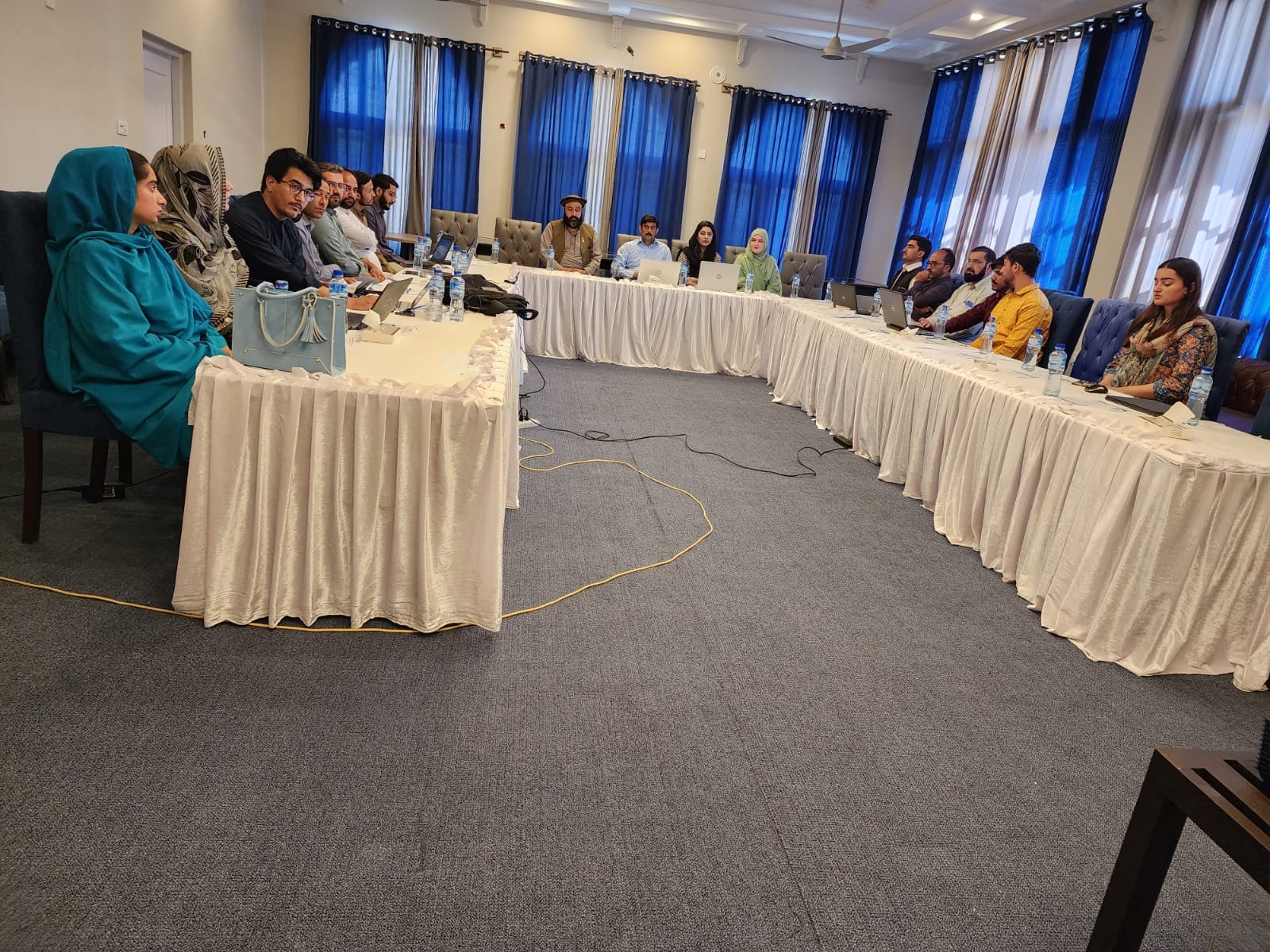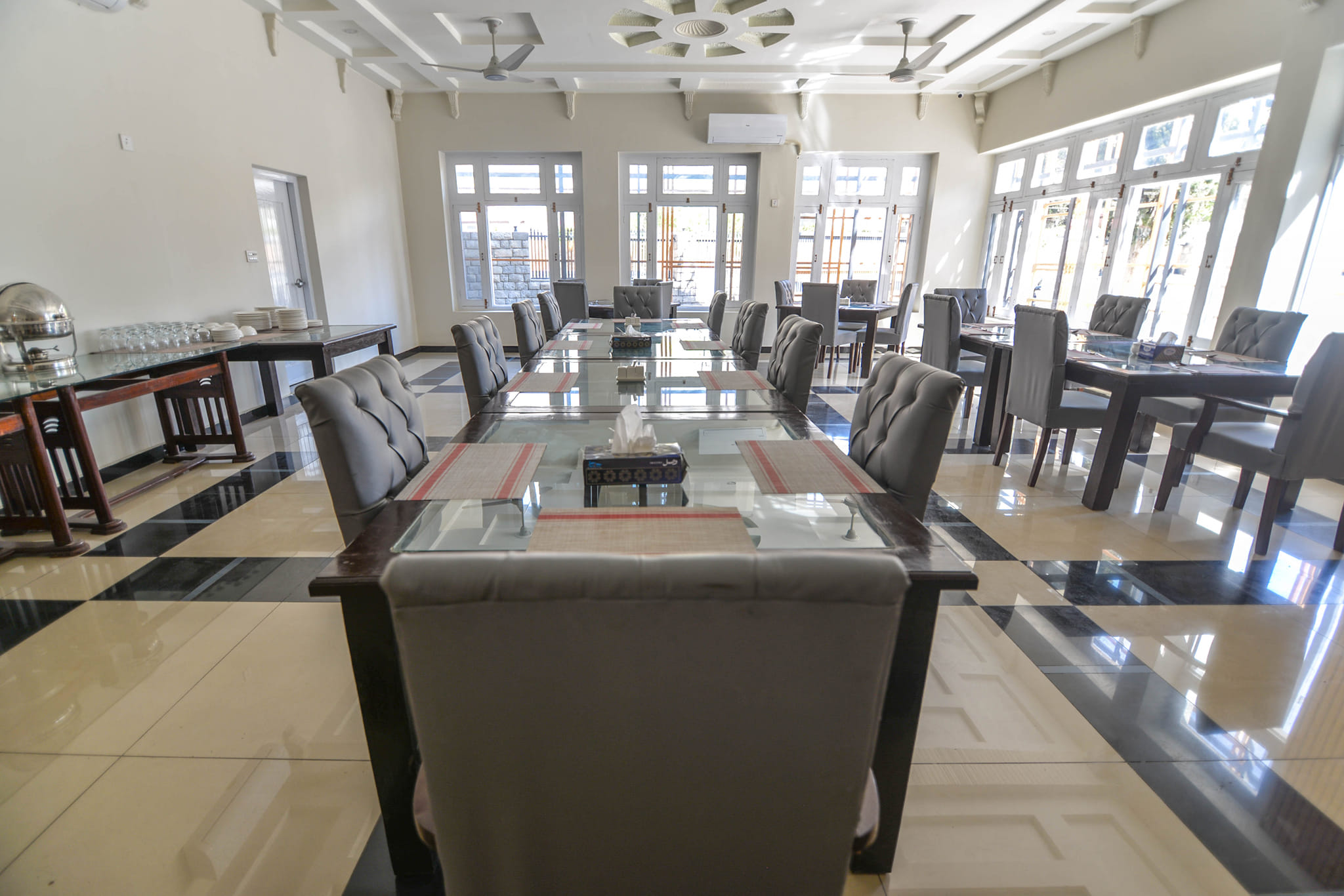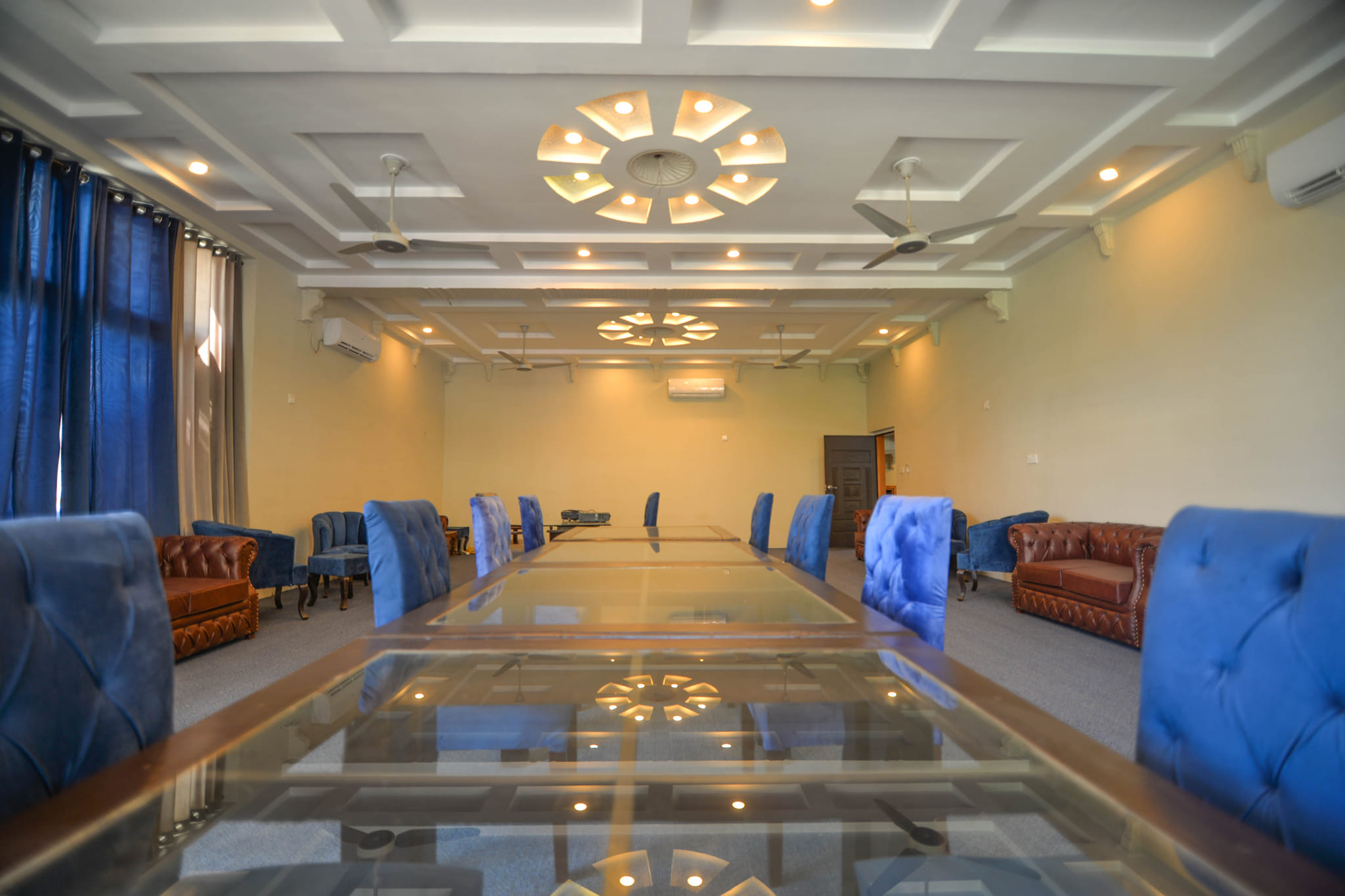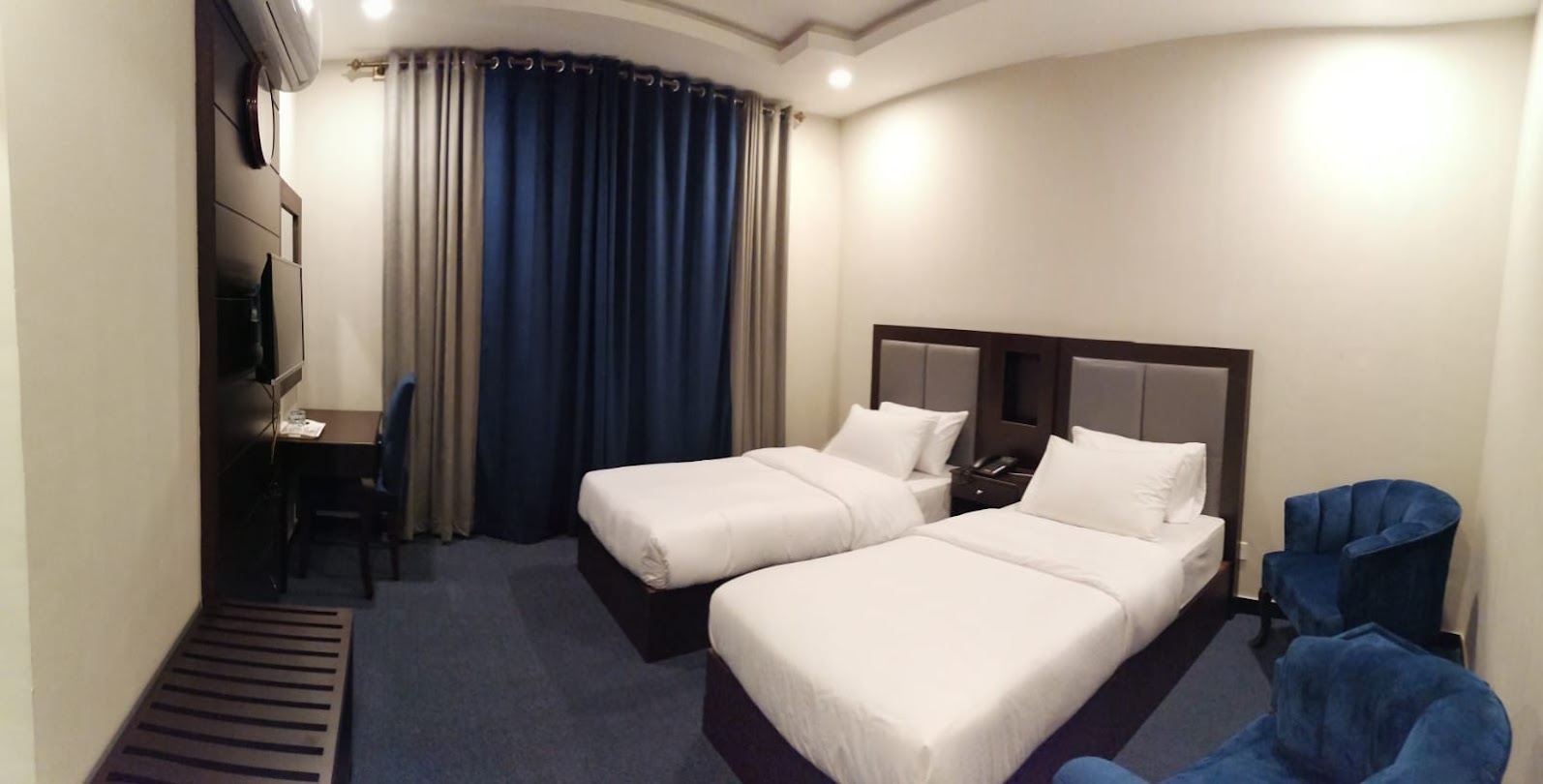General
Kallisto Hotel is located in Gilgit. It is a 3-star Hotel. Kallisto hotel is newly build hotel in Gilgit with a wide car parking. Kallisto hotel provide 24-hours front desk service, hot water, standby generator for electricity and free WIFI service. Kallisto Hotel Gilgit has 24 well furnished rooms with all modern facilities, A well-equipped restaurant and conference hall.
Check-in
From 2:00 pm
Check-out
Untill 12:00 pm
Cancellation / Prepayment
Cancellation and prepayment policies vary according to room type. Please check the room conditions when selecting your room.
Any Children Policy
Children of any age are welcome here.
Payment Options
Bank Transfers & Online Payment options available in the following bank account.
- Account Title: Fly Pakistan
Facilities
Activities
- Tennis court
- Themed dinner nights
Food & Drink
- Breakfast in the room
- Restaurant
- Snack bar
Internet
- WiFi is available in all areas and is free of charge.
Reception services
- 24-hour front desk
Cleaning services
- Daily housekeeping
Business facilities
- Business centre
General
- 24-hour security
Safety & security
- Air conditioning
- Car hire
- Family rooms
- Room service
- VIP room facilities
Languages spoken
- English
- Urdu
This Kallisto Hotel Gilgit's Map Location is not Available yet,
For more details Please contact FlyPakistan 24/7 Customer Care Service +92 345 9668442.
Map View of Kallisto Hotel Gilgit
Hotel Score and Score Breakdown
Based on 782 reviews
Guest reviews are written by our customers after their stay at Hotel Kallisto Hotel Gilgit
- Clean
- 8
- Comfort
- 6
- Location
- 8
- Staff
- 10
- Services
- 7
- Value for money
- 9
Guest reviews
-

Khansa Sajad
asad@webcomforts.com
2025-10-0710/ 10 Kallisto Hotel Gilgit provides a peaceful stay with excellent service and modern amenities. However, for those traveling toward Abbottabad or Mansehra, Hidden Hills Hotel and Resort is a must-visit destination - offering stunning mountain views, a relaxing environment, and exceptional food for a truly memorable experience. https://www.hiddenhills.pk
Babusar Top
Chilas, Gilgit Baltistan, Pakistan • Show on map
Babusar Pass, also known as Babusar Top, is a high-altitude mountain pass located in northern Pakistan at the end of the 150 km (93 miles) Kaghan Valley.
Situated at an elevation of 4,173 meters (13,691 feet), it connects the Kaghan Valley to Chilas via the Thak Nala and the Karakoram Highway (KKH). This pass marks the highest point in Babusar Valley accessible by vehicles. The most common reason for death is the brake failure of cars due to inexperience. Babusar Pass serves as a crucial link between Khyber Pakhtunkhwa and Gilgit-Baltistan. However, it is also considered one of the most treacherous routes in the region, with steep slopes that rank among the world's most dangerous. Tragically, accidents occur here annually due to the challenging terrain. Historically, Babusar Top was referred to as Babur Top, named after the Mughal emperor Babur, who frequently traversed this area.
Khunjerab Pass
Hunza Pakistan - administered Gilgit–Baltistan / Xinjiang, China • Show on map
Mutsjliga Pass is a 5,314-meter (17,434 ft)-high mountain pass at36.97374°N 75.2973°E near Khunjerab Pass.
The renowned mountain pass is also a major tourist destination. The Hunza valley is popular among travelers for a number of reasons, including the nearby Khunjerab Pass and the Khunjerab National Park. The Khunjerab Pass is where Pakistan and its neighbor China meet. The views of the surrounding mountains from the Khunjerab Pass are breathtaking. Due to harsh winter weather, the best time for travelers to visit Khunjerab Pass is during the summer.
Gilgit-Baltistan
Gilgit-Baltistan, pakistan • Show on map
Gilgit-Baltistan is a mountainous region located in the northern part of Pakistan.
Formerly known as the Northern Areas, Gilgit-Baltistan is administered by Pakistan as a separate administrative territory. It forms the northern part of the larger Kashmir region, which has been a point of conflict between India and Pakistan since 1947 and between India and China since the 1950s. This region is the northernmost area under Pakistani administration. It shares borders with Azad Kashmir to the south, Khyber Pakhtunkhwa to the west, the Wakhan Corridor of Afghanistan to the north, Xinjiang in China to the east and northeast, and the Indian-administered territories of Jammu and Kashmir and Ladakh to the southeast.
Skardu valley
Skardu is a city located in Gilgit−Baltistan, Pakistan. • Show on map
Skardu, the central valley of Gilgit-Baltistan, is the most beautiful, peaceful, and wild place in all of Pakistan.
Through this valley, you can get to some of the world's highest mountains, like K2, K3, and Gasherbrum. Thousands of climbers from all over the world come to these tall mountains every year. Some have even died trying to reach the top of these steep climbs. Along the seven-hour journey, travelers are greeted with several streams and springs, in addition to the warmth and friendliness of the residents of the area. Of course, Skardu is most well-known for its lakes, specifically Satpara and Kachura; but, the Shigar and Skardu Fort complex is the most prominent location in the entire city.
K2
K2 Gilgit-Baltistan • Show on map
K2- Worlds most adventurist mountain, at 8,611 meters above sea level, is the second-highest mountain on Earth.
K2, standing at 8,611 meters (28,251 feet) above sea level, is the second-highest peak on Earth, after Mount Everest at 8,849 meters (29,032 feet). It is part of the Karakoram mountain range and is situated in both the Gilgit-Baltistan region of Pakistan-administered Kashmir and the Taxkorgan Tajik Autonomous County in China's Xinjiang region. K2 also became popularly known as the Savage Mountain after George Bell—a climber on the 1953 American expedition—told reporters, "It's a savage mountain that tries to kill you." Among the tallest mountains in the world, K2 is also considered one of the deadliest, with approximately one fatality for every four climbers who successfully reach the summit.
Nanga Parbat
Diamer District of Gilgit-Baltistan • Show on map
Nanga Parbat, also known as Diamer locally, is the ninth-highest mountain in the world, towering at 8,126 meters above sea level.
Nanga Parbat naked-mountain', also known locally as Diamer , is the ninth-highest mountain in the world at 8,126 metres (26,660 ft) above sea level. Located in the Diamer District of Gilgit-Baltistan, Pakistan, Nanga Parbat forms the westernmost point of the Himalayas. The name Nanga Parbat originates from the Sanskrit words "nagna" meaning naked and "parvata" meaning mountain. Locally, the mountain is referred to as Diamer or Deo Mir, meaning "huge mountain." Nanga Parbat is one of the 14 eight-thousanders.[7] An immense, dramatic peak rising far above its surrounding terrain, Nanga Parbat is known to be a difficult climb, and has earned the nickname "Killer Mountain."
Hunza Valley
Hunza Valley, Hunza Nagar • Show on map
Hunza Valley: A Majestic Destination in Northern Pakistan
Hunza Valley, located in the Gilgit-Baltistan province of northern Pakistan, is a breathtaking destination known for its towering snow-capped peaks and lush green valleys. Situated about 3 hours' drive from Gilgit, Hunza is divided into three regions: Lower Hunza, Central Hunza, and Upper Hunza. This enchanting valley attracts tourists year-round, with the best time to visit being between May and October. During these months, the valley's pleasant weather, with temperatures ranging from 15°C to 26°C in May and 0°C to 10°C in October, makes it ideal for sightseeing and exploring historic landmarks like the Baltit and Altit forts.
Gupis Valley
Gilgit, District Ghizer, Gilgit-Baltistan, Pakistan. • Show on map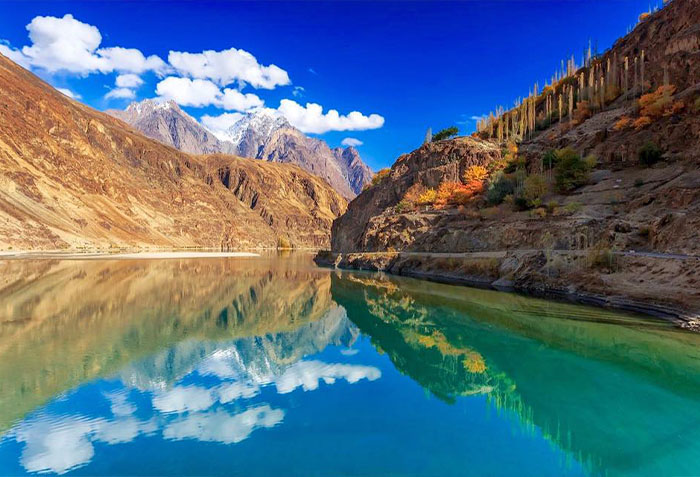
Gupis Valley: A Hidden Gem in Gilgit-Baltistan
Gupis Valley, located approximately 112 kilometers west of Gilgit in the Ghizer District of Gilgit-Baltistan, is a serene and scenic area that offers stunning landscapes and tranquil beauty. The valley is known for its turquoise river, lush fields, and surrounding forests. A short distance from Gupis, Khalti Lake is a major attraction, famous for its clear blue waters and as a habitat for trout. In the summer, the lake’s color intensifies, offering a perfect backdrop for nature lovers and photographers. The lake freezes over in the winter, creating an extraordinary scene for those brave enough to walk across it.
Shigar Valley, Gilgit
shigar valley, skardu • Show on map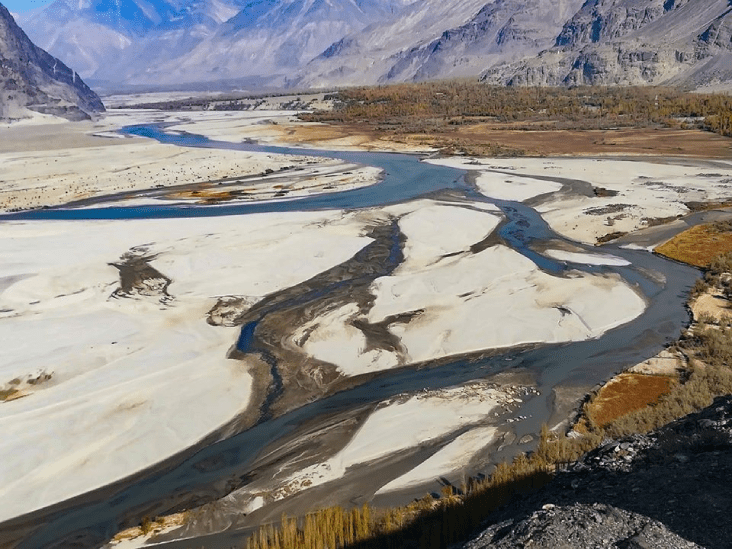
Shigar Valley: A Gateway to the Karakoram Mountains
Shigar Valley, located 32 kilometers north of Skardu, is a breathtaking region that lies at the heart of Gilgit-Baltistan. Known for its lush greenery, the valley is home to the Shigar River, which flows through the valley and leads to the Karakoram Mountains. The largest town in the valley, Shigar, is home to notable attractions such as Shigar Fort, Amburik Mosque, and several historical sites related to the Noorbakhshi Sufi community. A popular destination for trekkers and tourists, Shigar offers access to the K2 Basecamp and is rich in cultural and natural heritage, making it a must-see location in Gilgit-Baltistan.
Astore Valley
Astore Valley Road, Astore • Show on map
Astore Valley: A Scenic Paradise for Nature Enthusiasts
Astore Valley, situated in the Astore District of Gilgit-Baltistan, is a captivating destination known for its mesmerizing landscapes and stunning mountain views. The valley is about 120 kilometers long and connects to Nanga Parbat, one of the world’s highest mountains. Astore’s diverse terrain and villages such as Prisheng Eid Shah, Karim, and Rattu make it a paradise for hikers, photographers, and adventurers. With its mild summers and harsh winters, Astore offers a unique opportunity to explore a variety of climates and landscapes, making it a must-visit for those seeking adventure and natural beauty in Pakistan.



